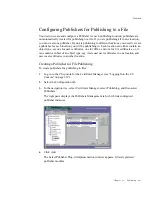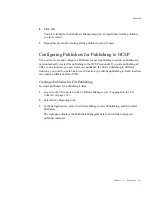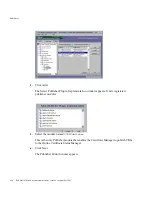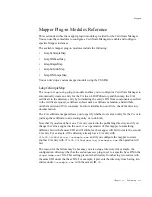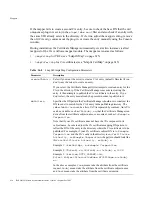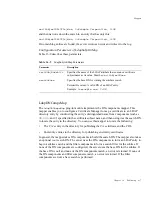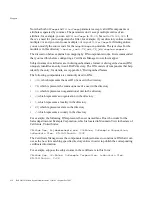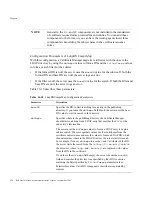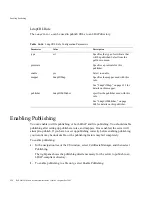
Mappers
614
Red Hat Certificate System Administrator’s Guide • September 2005
If the mapper fails to create a second CA entry, be sure to check the base DN that the uid
uniqueness plug-in is set to (in the
slapd.ldbm.conf
file) and also check if an entry with
the same UID already exists in the directory. If it’s true, adjust the mapper setting, remove
the old CA entry, comment out the plug-in, or create the entry manually using the Console
window.
During installation, the Certificate Manager automatically creates two instances (called
mappers) of the CA certificate mapper module. The mappers are named as follows:
•
LdapCrlMap
for CRLs (see “LdapCrlMap” on page 615)
•
LdapCaCertMap
for CA certificates (see “LdapCaCertMap” on page 615)
Table 16-8
LdapCaSimpleMap Configuration Parameters
Parameter
Description
createCAEntry
Select if you want the server to create a CA’s entry (default). Deselect if you
don’t want the server to create an entry.
If you select, the Certificate Manager first attempts to create an entry for the
CA in the directory. If the Certificate Manager succeeds in creating the
entry, it then attempts to publish the CA’s certificate to the entry. If you
don’t select, the entry must already be present in order to publish to it.
dnPattern
Specifies the DN pattern the Certificate Manager should use to construct the
DN in order to search for the CA’s entry in the publishing directory. The
value of
dnPattern
can be a list of AVAs separated by commas. An AVA
can be a variable, such as
CN=$subj.cn
, that the Certificate Manager can
derive from the certificate subject name, or a constant, such as
O=Example
Corporation
.
Note that if your CA certificate does not have the
CN
component in its
subject name, be sure to adjust the CA certificate mapping DN pattern to
reflect the DN of the entry in the directory where the CA certificate is to be
published. For example, if your CA certificate subject DN is
O=Example
Corporation
and the CA’s entry in the directory is
cn=Certificate
Authority, o=Example Corporation
, the pattern should look like
this:
cn=Certificate Authority, o=$subj.o
Example 1:
uid=CertMgr, o=Example Corporation
Example 2:
CN=$subj.cn,OU=$subj.ou,O=$subj.o,C=US
Example 3:
uid=$req.HTTP_PARAMS.uid,
E=$ext.SubjectAlternativeName.RFC822Name,ou=$subj.
ou
In the above examples,
$req
means take the attribute from the certificate
request,
$subj
means take the attribute from the certificate subject name,
and
$ext
means take the attribute from the certificate extension.
Содержание CERTIFICATE 7.1 ADMINISTRATOR
Страница 1: ...Administrator s Guide Red Hat Certificate System Version7 1 September 2005 ...
Страница 22: ...22 Red Hat Certificate System Administrator s Guide September 2005 ...
Страница 128: ...Cloning a CA 128 Red Hat Certificate System Administrator s Guide September 2005 ...
Страница 230: ...Configuring Key Archival and Recovery Process 230 Red Hat Certificate System Administrator s Guide September 2005 ...
Страница 234: ...Enterprise Security Client 234 Red Hat Certificate System Administrator s Guide September 2005 ...
Страница 368: ...ACL Reference 368 Red Hat Certificate System Administrator s Guide September 2005 ...
Страница 460: ...Constraints Reference 460 Red Hat Certificate System Administrator s Guide September 2005 ...
Страница 592: ...CRL Extension Reference 592 Red Hat Certificate System Administrator s Guide September 2005 ...
Страница 676: ...Cloning the Data Recovery Manager 676 Red Hat Certificate System Administrator s Guide September 2005 ...
Страница 688: ...Security Requirements for the IT Environment 688 Red Hat Certificate System Administrator s Guide September 2005 ...
Страница 720: ...1 3 Organization Security Policies 720 Red Hat Certificate System Administrator s Guide September 2005 ...


